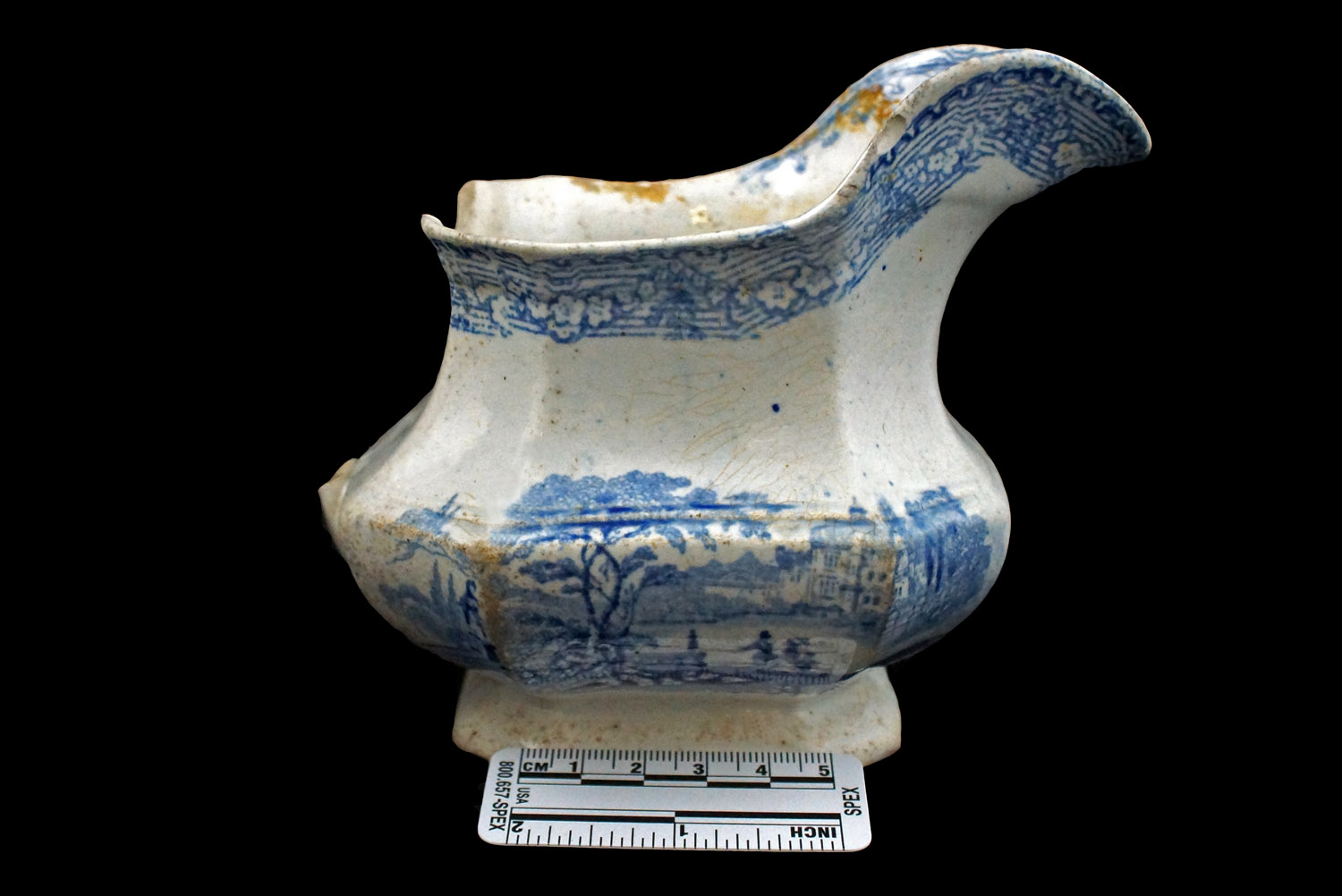Manufacture date : 1760- present
[distance1]

According to Snyder (1997:9), “transfer printing allowed a potter to quickly duplicate a pattern by transferring it from an [engraved] copper plate to a ceramic vessel via a specially treated paper. Transfer printed patterns appealed to consumers as the process afforded them the opportunity to purchase complete sets of dishes that were virtually identical, a feat never before possible with the hand painted wares.”
Overglaze motifs in black were common on creamware prior to the 1820s. Underglaze motifs were exclusively blue until the potters discovered how to control for colour in the firing process in the 1820s. Additional colours include black, green, red/pink, purple, brown and combinations thereof. Prints are common on pearlware, refined white earthenware, and ironstone.
[distance1]
| Before 1830 | 1830-1845 | 1845-1870 | 1870-1890 | After 1890 |
| Blue only | Blue, Brown, Black, Red, Purple or Green | Blue, Brown, black | Blue and browns popular in 1880’s | Many colours; over glaze |










